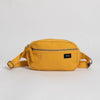
This symbol up above is the predominant image to depict “recycling” on many consumer products, including plastics. Since the 1960s, booming mass production of plastics and mainstream plastic use has proven itself to be a formidable foe to our health and the health of our environment, but what most people may be unaware of is that there is not just one blanket type of plastic. In fact, categorically, there are seven recognized types.
If you look closely inside the recycling triangle on your plastic waste you will find a number labeled 1, 2, 3, 4, 5, 6, or 7, each number represents the different types of plastic materials categorized under that number.

Image by Eartheasy
- Plastics labeled “1” represent PETE or polyethylene terephthalate: These plastics include many single use plastics, are commonly clear in color, and are the easiest to recycle. Some common examples of “1” plastics are water bottles, soda bottles, plastic juice containers, etc.
- Plastics labeled “2” represent HDPE or high-density polyethylene: These plastics are harder to break down, tend to be colored instead of clear, but are still relatively easily recycled. Some common examples of “2” plastics are cleaning supply plastic bottles, shampoo and conditioner bottles, soap bottles, etc.
- Plastics labeled “3” represent PVC or polyvinyl chloride: These plastic types are very toxic to the environment and, because of this, require specialized recycling. “3” plastics are common in piping and other materials needed for building, vinyl, plastics for packing (bubble wrap), etc.
- Plastics labeled “4” represent LDPE or low-density polyethylene: These plastics are for bulk recycling, not single item recycling. Certain stores offer bins where many plastic bags can be gathered and recycled together. Some common examples of “3” plastics are shopping bags, trash bags, plastic wrapping, etc.
- Plastics labeled “5” represent PP or polypropylene: Some of these items cannot be recycled and some of them can. For example, straws which are categorized as “5” cannot be recycled. Other examples of “5” plastics are bottle caps, plastic furniture, toys, etc.
- Plastics labeled “6” represent PS or polystyrene: These plastics are incredibly toxic to the environment, resistant to degradation, and can only be recycled if done in a specialized way. The most famous example of a “6” plastic is styrofoam; other examples include costume jewelry, and hard plastics like CD cases, toys, etc.
- Plastics labeled “7” represent various miscellaneous plastics that are not categorized under numbers 1 through 6. Characteristics of these different plastics are varied, and some materials are recyclable while others are not. Some examples of “7” plastics are fiberglass, acrylic, nylon, etc.
A couple of important things to note are that not all types of plastics can be recycled and although these are some common types, you will find under each category that does not mean items listed are limited to only being made from one specific plastic. A general example for instance, would be a plastic drinking cup that could be made of plastics 1 or 2 but could also be made from plastics 5 and 6 or even 7. This is why it’s so crucial as a consumer to be aware of the products you use, how they affect your health and the health of the environment, and the impacts of the eventual waste you will leave behind. Make sure to check your state and local waste municipalities for more information on how to recycle plastics in your area!
Related blog:





